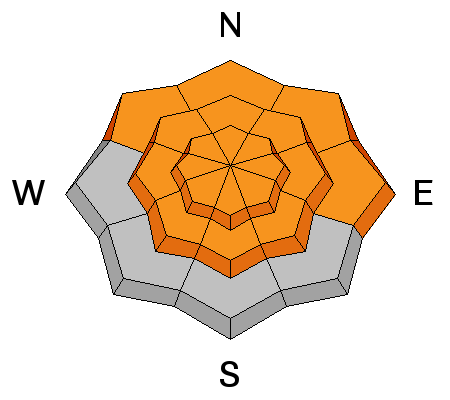25th Annual Black Diamond Fall Fundraising Party
Thursday, September 13; 6:00-10:00 PM; Black Diamond Parking Lot

25th Annual Black Diamond Fall Fundraising Party
Thursday, September 13; 6:00-10:00 PM; Black Diamond Parking Lot
| Advisory: Uintas Area Mountains | Issued by Craig Gordon for Sunday - April 8, 2018 - 3:28am |
|---|
 |
special announcement Today, Sunday April 8th is the last of our regularly scheduled advisories for the western Uinta Mountains. I will update this advisory Monday morning with some general snow and weather info. |
 |
current conditions Skies cleared late last night in the wake of yesterday's deluge which delivered nearly an inch of rain at the trailheads and a couple inches of dense, heavy, glop along the high elevation ridges. Temperatures fell into the 20's and 30's overnight and southwest winds currently blow 20-40 mph along the peaks. Riding and turning conditions are gonna be a bit underwhelming... might be a good day to get some projects off your plate and regroup with a little fresh snow forecast for the middle of the week.
Above are 24 hour temperatures and snow depth in Trial Lake along with winds and temperatures from Windy Peak. More remote Uinta weather stations are found here Well this is a heck of a way to run a winter. Pictured above... a tale of two trailheads. Common theme... while still closed, they're both toast and dry for miles. A great body of recent trip reports, observations, and snow data here. |
 |
recent activity No significant avalanche activity to report from yesterday. A full list of avalanches is found here. |
| type | aspect/elevation | characteristics |
|---|


|


|

LIKELIHOOD
 LIKELY
UNLIKELY
SIZE
 LARGE
SMALL
TREND
 INCREASING DANGER
SAME
DECREASING DANGER
|
|
description
Yesterday's rain and dense snow tested our structurally challenged snowpack, but the good new is... I didn't hear of any avalanches breaking into deeply buried weak layers in our snowpack. The bad news is... many slopes, particularly those that have remained shallow and weak all season, still remain suspect. We received a good shot of rain yesterday and these are uncharted waters for us... I don't know exactly how it'll play out in the short term. What I do know is this- rain on snow is no Es Bueno and I bet we see some unusual avalanche activity. I still think deep, dangerous, tree snapping avalanches that break to the dirt and remove the entire seasons snowpack aren't out of the question and once triggered, these slides will be piling up huge amounts of bone twisting debris. |
| type | aspect/elevation | characteristics |
|---|


|


|

LIKELIHOOD
 LIKELY
UNLIKELY
SIZE
 LARGE
SMALL
TREND
 INCREASING DANGER
SAME
DECREASING DANGER
|
|
description
Temperatures are just starting to cool off, but the surface snow will remain damp and soggy for a good portion of the day. Any avalanche triggered can easily gouge into weaker layers of snow buried deeper in the snowpack, creating a much larger avalanche then you might expect. |
 |
weather
A moist northwest flow maintains occasional show showers through the day. Temperatures rise into the 30's and northwest winds peak this morning, diminishing as the day wares on. High pressure brings a warming and drying trend through the first half of the upcoming week. |
| general announcements The information in this advisory expires 24 hours after the date and time posted, but will be updated Monday April 9th, 2018. If you're getting out and about, please let me know what you're seeing especially if you see or trigger and avalanche. I can be reached at [email protected] or 801-231-2170 It's also a good time to set up one of our very popular avalanche awareness classes. Reach out to me and I'll make it happen. This information does not apply to developed ski areas or highways where avalanche control is normally done. This advisory is from the U.S.D.A. Forest Service, which is solely responsible for its content. This advisory describes general avalanche conditions and local variations always occur. |